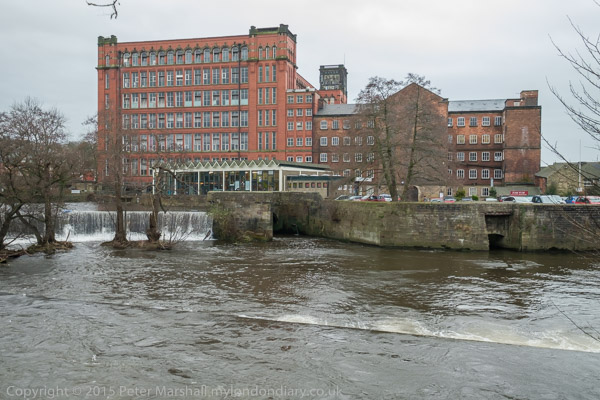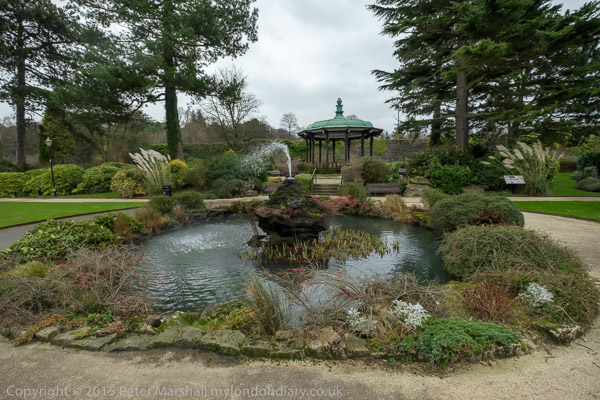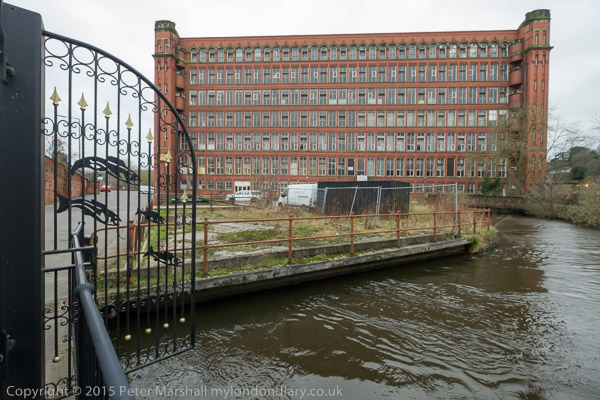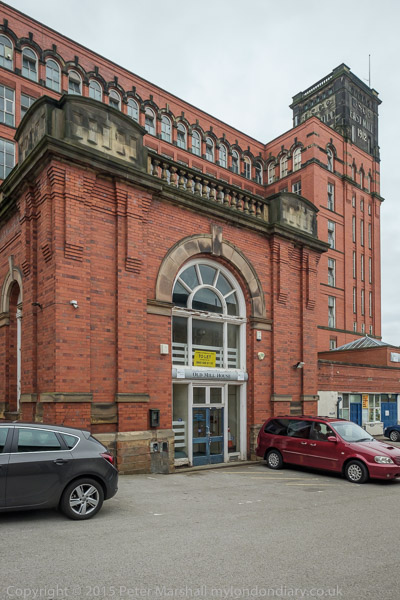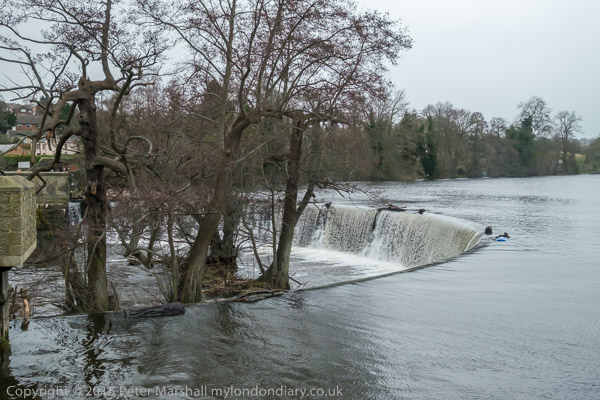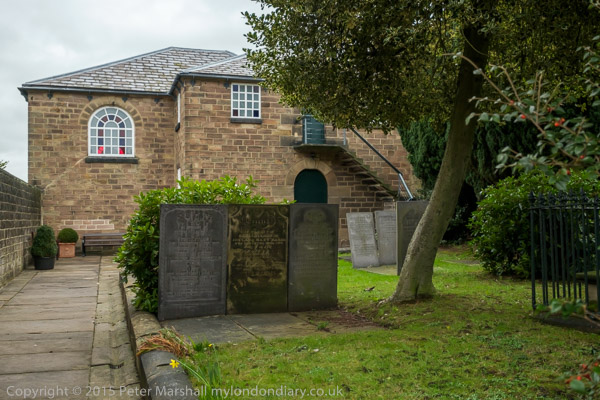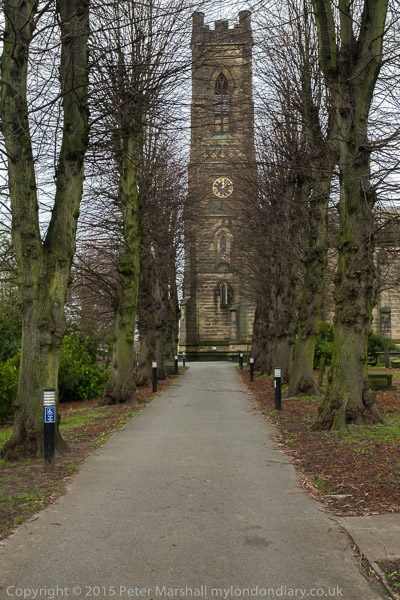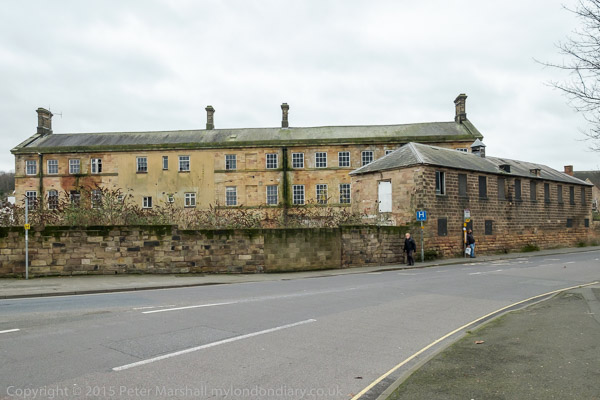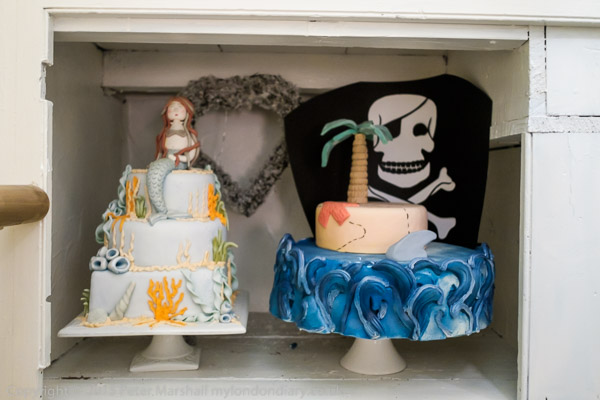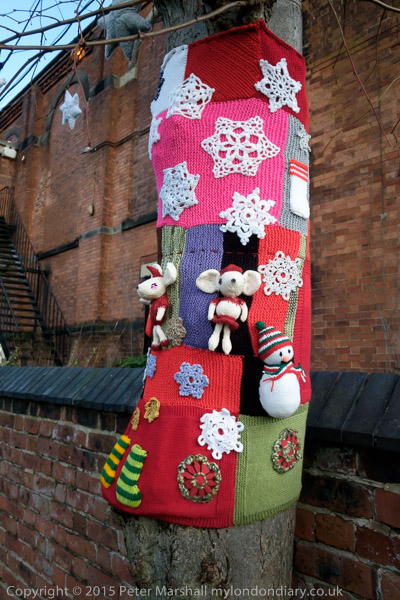Lewisham Hospital, Greenwich Peninsula, Syria & Mali: As often when I had a long break between two events I took the opportunity to take an extensive walk in one of my favourite areas of London and on Friday 15th February I went to the Thames Path at Greenwich after a lunchtime protest at Lewisham Hospital. Then I went to Whitehall for a small protest against Western military intervention in Mali and Syria and a possible attack on Iran.
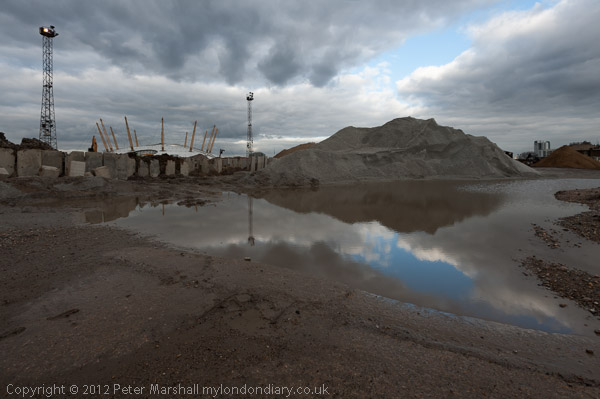
Fight to Save Lewisham Hospital Continues
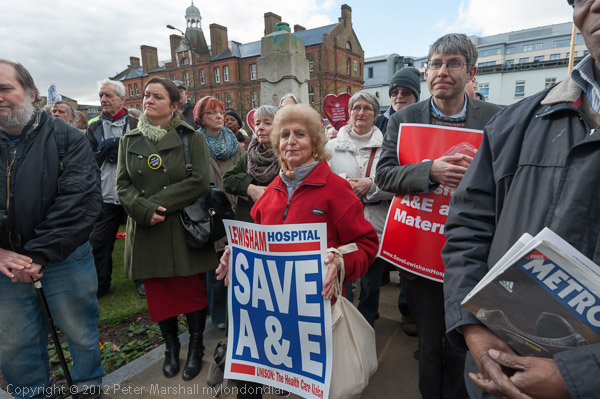
A lunchtime rally at the war memorial opposite the Hospital made clear that the fight by the entire local community to save services at their hospital was continuing.
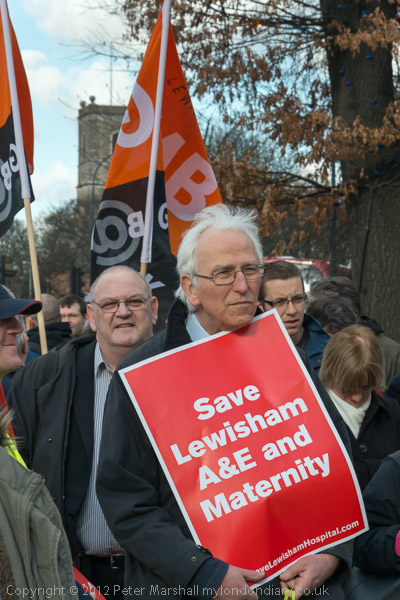
As well as a legal challenge there were to be further mass demonstrations including a ‘Born in Lewisham Hospital’ protest the following month.
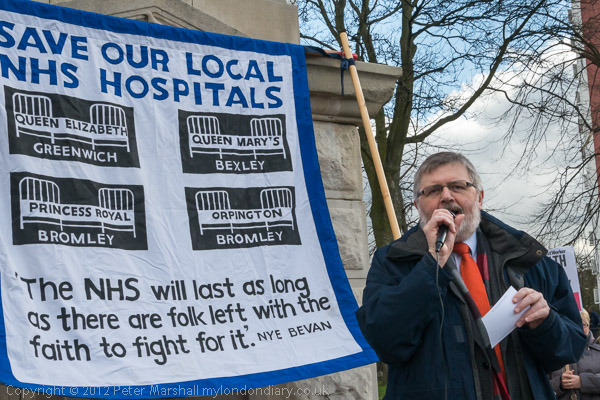
People in the area and all concerned with the future of the NHS were appalled by Jeremy Hunt’s decision to accept to the proposals for closure, which are medically unsound and would lead to more patients dying, but they would result in a huge waste of public funds.
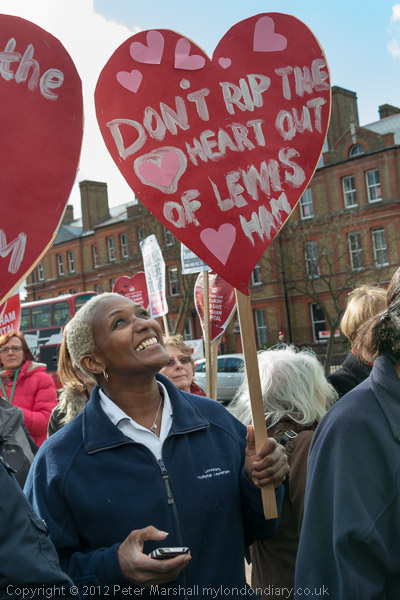
The financial problem that led to the proposal was caused not by Lewisham but by a disastrous PFI (private finance initiative) agreement to build a hospital a few miles away.
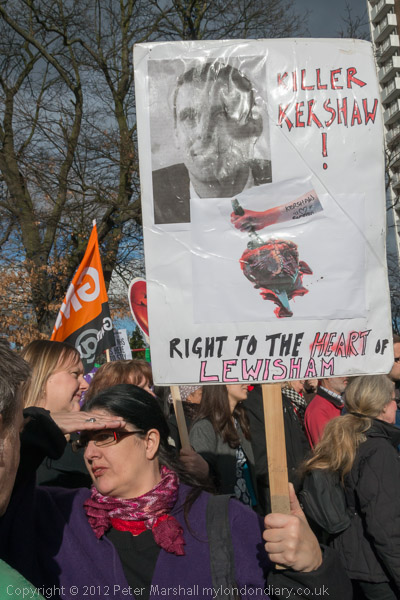
As I wroteL “Lewisham is a successful and financially sound hospital which has received sensible public investment to provide up to date services, and the services that will be cut there will have to be set up again and provided elsewhere by other hospitals. Closing Lewisham will not only incur high costs, but will result in the waste of the previous investment in its facilities.”
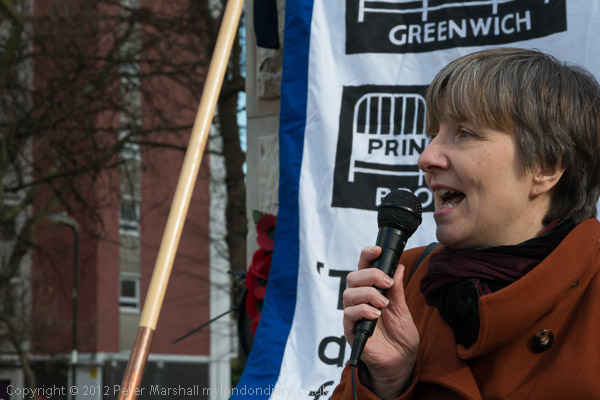
In making his decision Hunt deliberately set out to mislead the public by describing the replacement of A&E as only a small reduction in A&E services. The proposed urgent care centre could only deal with around 30% of the cases currently being covered. Similar the replacement of the current maternity service by a midwife only unit could only deal with around 10% of current births – and life-threatening transfers would be necessary if complications rose in these.
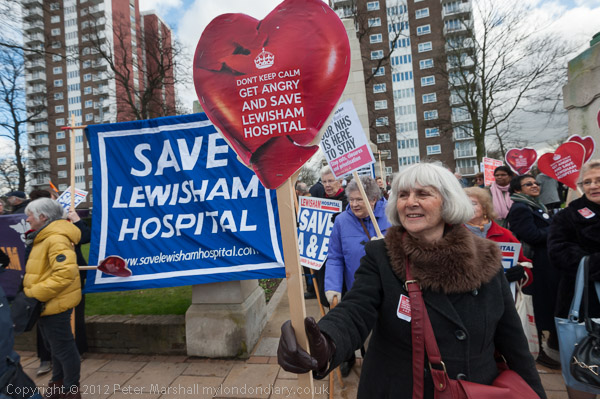
You can read a fuller account of the protest and more pictures at Fight to Save Lewisham Hospital Continues.
Thames Path – North Greenwich – Greenwich
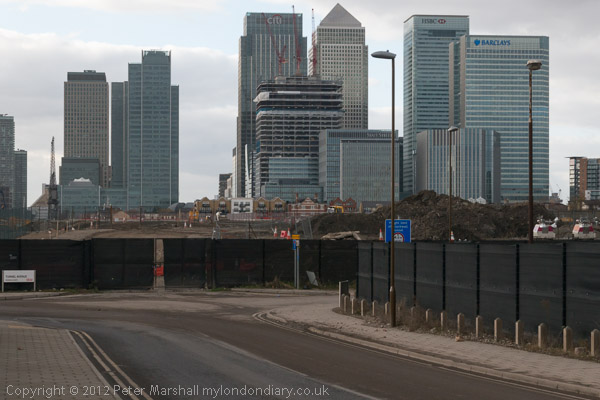
I took a bus to North Greenwich and tried to walk along the Thames Path, parts of which had reopened after a long closure. It was a warm day for February and started off sunny, though later the weather changed giving some dramatic skies.
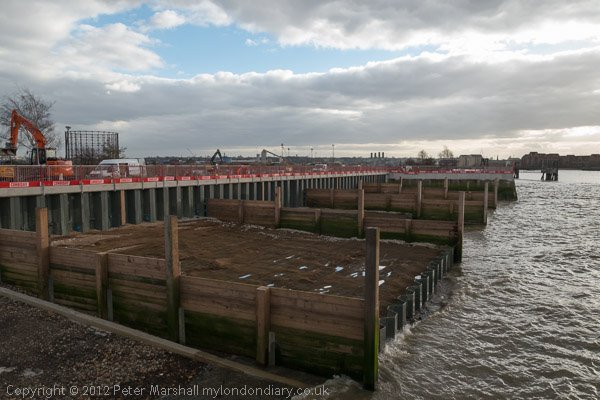
The path from Delta Wharf and north to Drawdock Road was still vlosed but beyond that in both directions the path was open. I’m not sure what all the work taking place was about, but in part it was to provide a new section of the path, and to put in new breakwaters. Some time later of course there will be new riverside flats here, but for the moment these were being built closer to Greenwich.
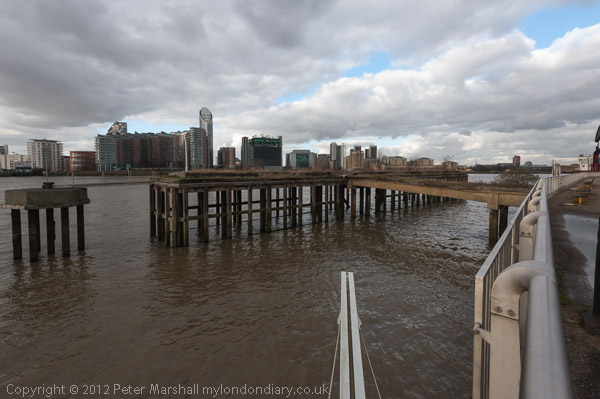
One fairly recent addition to the path was the Greenwich meridian marker at the bottom centre of this picture, the line going along in the gap between two metal beams and pointing north across the river.
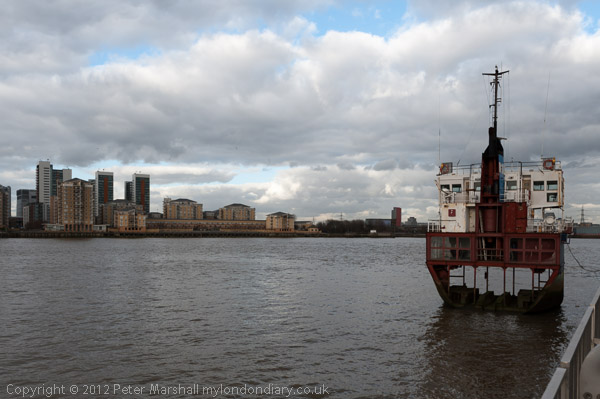
And a little further to the east is the sculpture A Slice of Reality by Richard Wilson. In the following year this was to become part of London’s first public art walk, The Line. It is a 30ft slice of the former sand dredger Arco Trent – Google’s AI gets it badly wrong by describing it as “an eighth-scale replica“. As the name suggests it is a slice of the actual ship.

As I turned back and walked towards Greenwich there were some dramatic skies and lighting, but also some slightly boring road walking where the path was diverted away from the river.
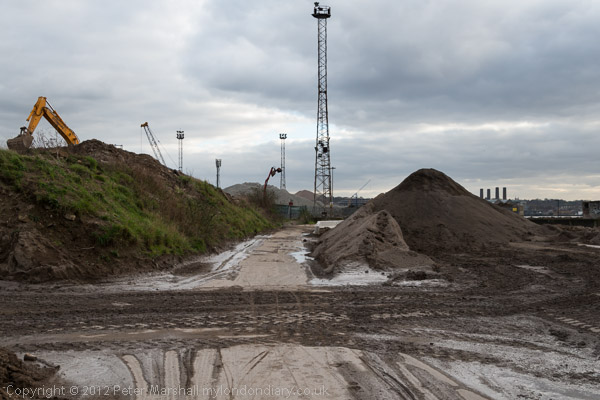
Soon I was able to return to the riverside path and walk through the surreal landscape of an aggregate wharf.
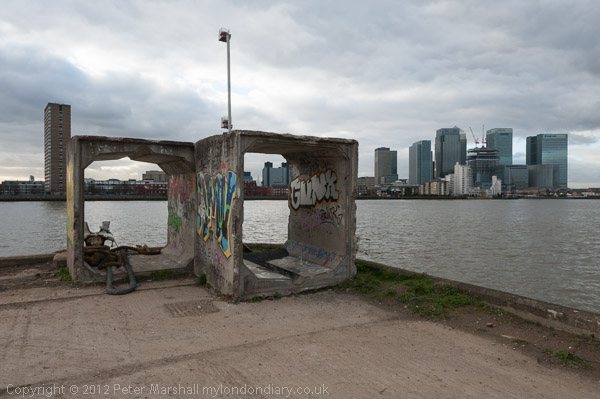
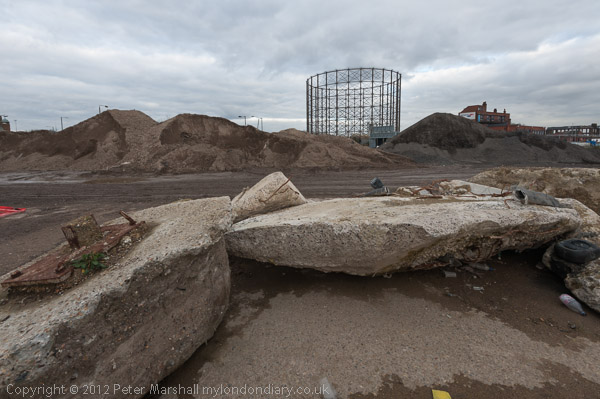

The final section of the walk on my way into Greenwich had been targeted by guerilla knitters.

I was getting short of time, and could only stop to make one panorama although the weather was perfect for it.
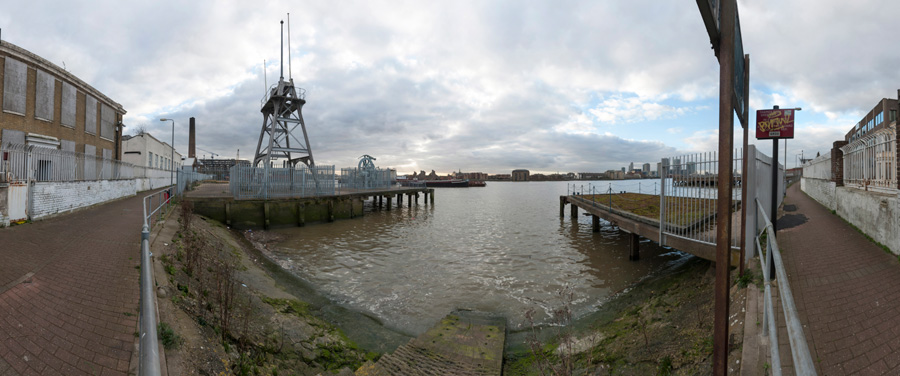
This view shows the riverside path at left going south at the left and north at the right – a view of over 180 degrees. The shoreline here highly curved was in reality straight. I think the image digitally combines half a dozen overlapping frames.
By then I was having to hurry to catch the train back into central London – and the light was falling.
Many more pictures from this walk at Thames Path Greenwich Partly Open.
Stop Western Intervention in Syria & Mali – Downing St
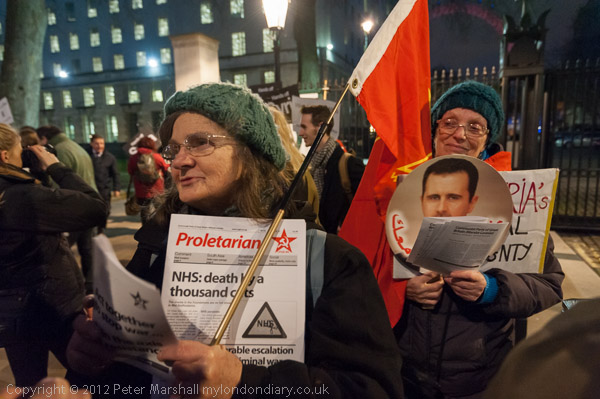
This protest had been called by Stop the War on the 10th anniversary of the march by 2 million against the Iraq war in 2003, the largest protest march ever seen in the UK (and with many others around the world also marching.)

On this occasion they were calling for a stop to Western intervention in Mali and Syria and against the possible attack on Iran but the numbers taking part were very much smaller, with only around a hundred turning up.

Among them were supporters of Syria’s President Assad and Stop the War had lost a great deal of support by opposing the help being given to groups against his regime, with many on the left calling for an end to his regime.
Stop Western Intervention in Syria & Mali
Flickr – Facebook – My London Diary – Hull Photos – Lea Valley – Paris
London’s Industrial Heritage – London Photos
All photographs on this page are copyright © Peter Marshall.
Contact me to buy prints or licence to reproduce.

